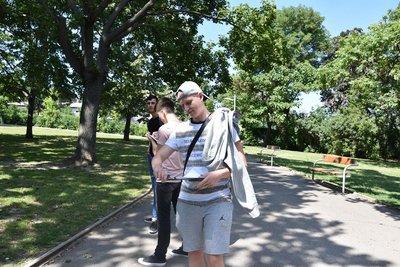Green4brain
Adolescents investigate the restorative effects of school areas (indoor/outdoor) and urban green spaces
Everyday school life challenges pupils’ well-being as well as their cognitive skills. They are less able to concentrate, can not sufficiently absorb the subject matters and are not balanced. The need to restore during school lessons is crucial, but what are the places in the school and living environments, where pupils can restore cognitive performance? The project Green4Brain investigated and compared restorative effects of different places in the school and living environments of adolescents. Two Viennese schools worked together with researchers from recreation planning, environmental health and environmental engineering. Green4Brain followed also a transdisciplinary approach; the involved school students acted on three levels: as researchers, as study group and as affected actors.
The project started with the recording of everyday life of the involved pupils: In a first step, they surveyed their own recreational places within the school and the living environment during different seasons with videoclips. Afterwards, they analysed and reflected their own recreation behaviour and experiences with these places using concept maps. In a second step, the restorative effects of several places on the wellbeing and the concentrativeness of pupils were measured in a standardised way. Different non-invasive psychological (e.g. subjective assessment of well-being), physical (blood pressure, pulse measurements) and cognitive (concentration test) methods were used. The measurements were planned in the school environment (e.g. classroom with/without plants, school yard) and in a public green space in different seasons (summer/winter). A quantitative survey based on an image-based choice model analysed how public green spaces should be designed to attract people also in the vegetation-free season. Finally, adolescents reflected and synthesiseed the results of different work packages and develop strategies to improve the restorative quality of their school environment in a future lab.
Following the transdisciplinary approach, the school students were involved in all work packages. In workshops, they learned about different methods and instruments of recreation planning, environmental psychology, medicine and engineering and can use these methods directly within the project. The collaboration between research team and schools included single school lessons, workshops lasting several hours or whole project days. Especially interested pupils had the opportunity to take part in an internship at the University of Natural Resources and Life Sciences, Vienna, to learn more about research and a researchers’ workday.
This project is already completed.
Tagungsbeitrag
Publikation
-
In: Green Care 3/2018, 10-12.
-
In: Medi.um, 01/2018, 6-7.

